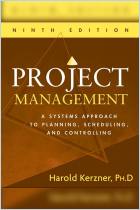Rejoignez getAbstract pour lire le résumé !

Rejoignez getAbstract pour lire le résumé !
Lia Tjahjana, Paul Dwyer and Mohsin Habib
The Program Management Office Advantage
A Powerful and Centralized Way for Organizations to Manage Projects
AMACOM, 2009
Aperçu
Successful firms control portfolios of multiple projects through program management offices. Here’s why.
Recommendation
A “Program Management Office” (PMO) helps an organization decide which projects it should fund and establishes proven project management procedures and processes. It also ensures that project managers adhere to controls. Management consultants Lia Tjahjana and Paul Dwyer and associate management professor Mohsin Habib discuss the PMO’s benefits and explain why your company might want a PMO and how to establish it. To illustrate PMOs at work, the authors present a case history based on an actual organization and walk readers through the various PMO considerations. Although the presentation is relatively dry, getAbstract recommends this comprehensive guidebook because it carefully spells out what project managers and senior executives need to know about PMOs and how they work.
Summary
About the Authors
Lia Tjahjana is a project management expert. Paul Dwyer has been a project manager for more than 10 years. Mohsin Habib is an associate professor of management at the University of Massachusetts, Boston.


















Comment on this summary